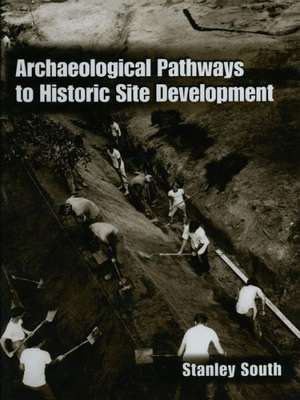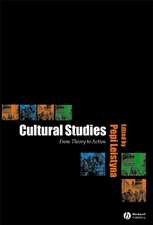Archaeological Pathways to Historic Site Development
Autor Stanley Southen Limba Engleză Paperback – 22 dec 2012
Preț: 405.48 lei
Nou
Puncte Express: 608
Preț estimativ în valută:
77.59€ • 81.38$ • 64.59£
77.59€ • 81.38$ • 64.59£
Carte tipărită la comandă
Livrare economică 01-15 aprilie
Preluare comenzi: 021 569.72.76
Specificații
ISBN-13: 9781461355106
ISBN-10: 1461355109
Pagini: 368
Ilustrații: XX, 342 p.
Dimensiuni: 210 x 279 x 19 mm
Greutate: 0.83 kg
Ediția:2002
Editura: Springer Us
Colecția Springer
Locul publicării:New York, NY, United States
ISBN-10: 1461355109
Pagini: 368
Ilustrații: XX, 342 p.
Dimensiuni: 210 x 279 x 19 mm
Greutate: 0.83 kg
Ediția:2002
Editura: Springer Us
Colecția Springer
Locul publicării:New York, NY, United States
Public țintă
ResearchCuprins
I. The Historical Pathway at the Charles Towne Settlement: 1670–1680.- 1. The Historical Pathway.- 2. The Methodological Pathway.- 3. The Archaeological Pathway to the 1670 Fortifications..- II. The Archaeological Pathway to the 18th and 19th Centuries.- 4. Old Town Plantation.- III. The Archaeological Pathway to Native Americans on Albemarle Point.- 5. The Archaic, Formative and Developmental Periods.- 6. A Pathway to the Climactic Period: A Ceremonial Center.- 7. The Pottery Pathway at the Ceremonial Center.- 8. The Material Culture Pathway to the Ceremonial Center..- 9. The Pathway to Decline.- ·Chicora Stylistic Ceramic Attributes (1974) Leland Ferguson.- · A List of Proveniences from the Ceremonial Center.- · Preface to “Man on Albemarle Point” (1974) Stanley South.- · Notes Translated on the Depositions of the English Defector Brian Fitzpatrick and the Spanish Spy Antonio Camunas St. Julian Ravenel Childs.- · A Summary of the Results of the Archaeological Project at Charles Towne in 2000 and 2001 Stanley South.- · Discovery at 1670 Charles Towne Michael J. Stoner.- References..- List of Subtitles..- List of Figures.- List of Tables.
Recenzii
From the reviews:
"[...] a major authority on method and theory in historical archaeology and an expert on the American Southeast, considers arhcaeological conservation, theory building, and historic site interpretation and restoration focusing on 1670-80 Charles Towne, South Carolina, and the Native American legacy that preceded European colonization. His well-documented compendium explicates "the process of historic site development for the education and entertainment of the visiting public", presenting a salient example of historic cultural resource management."
(Choice, 40:2, October 2002)
"The book is site reporting at its best. It is extremely well illustrated with numerous field excavation photographs, artifact plates, historical maps, and South's archaerological site plans, which rank among the most artistic and informative produced. This is an excellent site report and well worth the wait."
(Journal of Anthropological Research, 59, 2003)
"[...] a major authority on method and theory in historical archaeology and an expert on the American Southeast, considers arhcaeological conservation, theory building, and historic site interpretation and restoration focusing on 1670-80 Charles Towne, South Carolina, and the Native American legacy that preceded European colonization. His well-documented compendium explicates "the process of historic site development for the education and entertainment of the visiting public", presenting a salient example of historic cultural resource management."
(Choice, 40:2, October 2002)
"The book is site reporting at its best. It is extremely well illustrated with numerous field excavation photographs, artifact plates, historical maps, and South's archaerological site plans, which rank among the most artistic and informative produced. This is an excellent site report and well worth the wait."
(Journal of Anthropological Research, 59, 2003)








